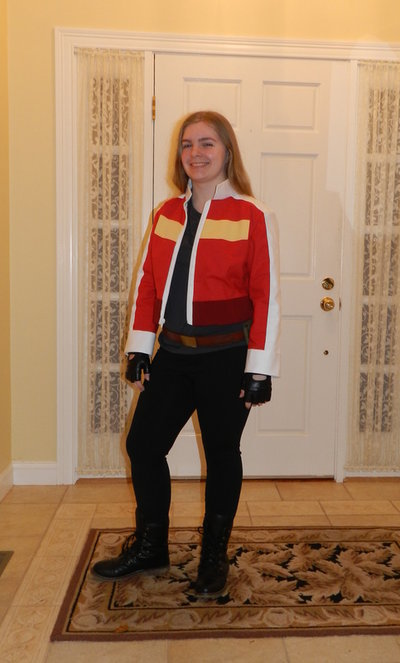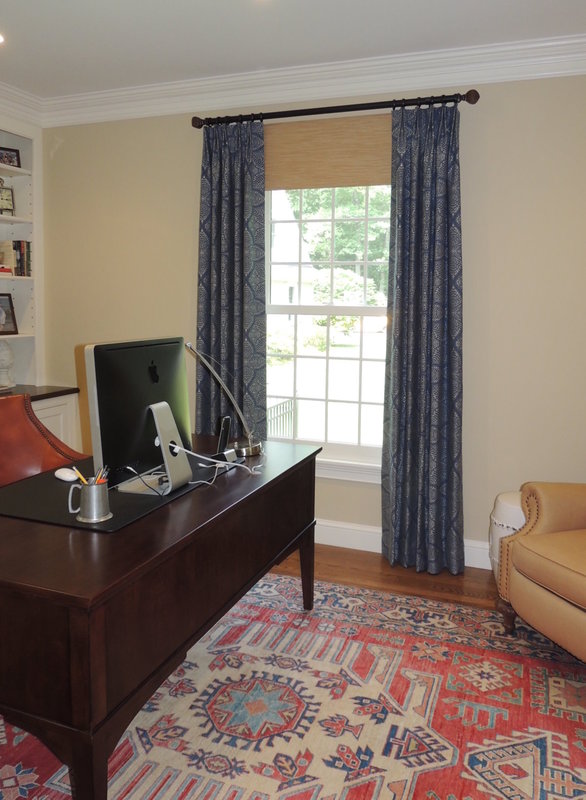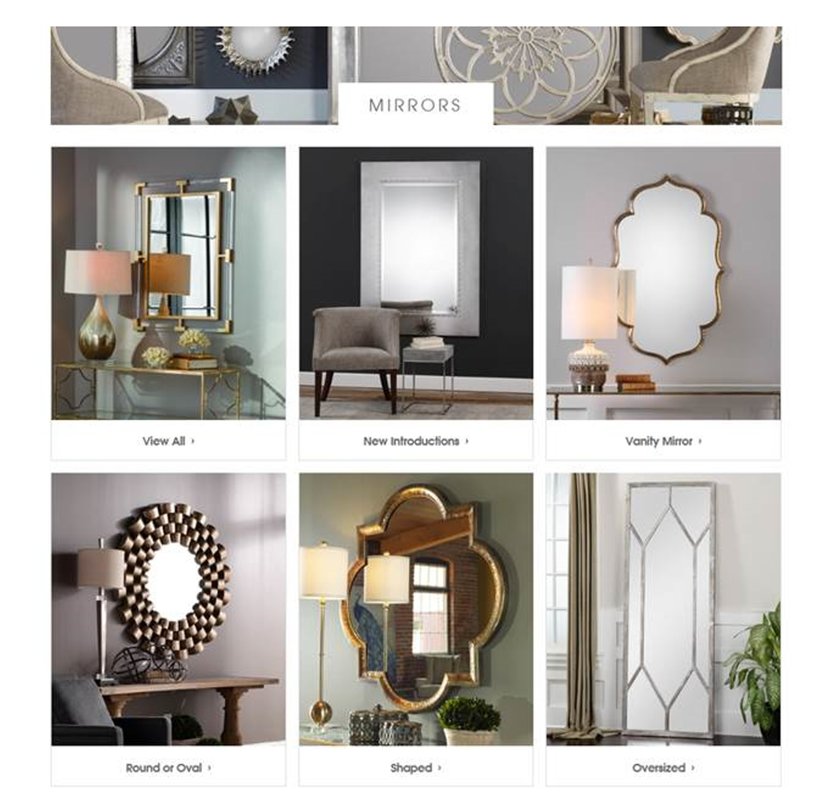|
Happy Halloween! What a great holiday, and one we celebrate here in Massachusetts in a big way. This year I’ve noticed incredibly elaborate Halloween decorations in my town, from seriously oversized blowup cats on roofs to creepy life-sized mannequins hanging from a tree (I’ve altered my walking route to avoid that one!) plus all the pretty and festive pumpkins, corn stalks, mums and other seasonal items. I can’t wait to see the real treats of the night - the happy kids in costumes showing all their imagination and spirit. My daughter is one of those super creative kids who absolutely adores Halloween, Cosplay and fantasy. So each Halloween I pull a “Project Runway” self-challenge (of sorts) to create whatever she has sketched up for her current favorite character. It’s great fun to turn my workroom into a costume design studio and bedeck my favorite client in whatever custom creation she designs. That Project Runway stuff is harder than it looks! Here is a sampling of my daughter’s costumes over the years. What fun and joy my husband and I have had with her on Halloween. Here's hoping you enjoy your Halloween, all you superheroes out there!
Today’s blog is about window treatments, specifically drapery panels. While draperies and window treatments are my passion (what better way to showcase gorgeous fabrics?!), and a large percentage of my business, I don’t think that I’ve specifically addressed the trade lingo and facts about draperies in my blog yet. Well, it’s high time! Draperies are a classic and current decorating medium to control light, soften a room, and well, finish it completely and perfectly. As stated by Erin Gates, Boston Interior Designer, author of Elements of Style and her own line of area rugs by Momeni and other beautiful home décor products: “Nothing makes a room look more polished and finished than custom tailored window treatments.” Erin Gate Erin is so right, and regularly features tailored, crisp, and elegant drapery panels in her design projects. So here’s a quick tutorial on the terminology of drapery panels: Stationary Panels: Draperies that are not specifically designed to close fully over the window, but hang at the sides of the window in their “as-designed” configuration. Stationary panels serve to add color, interest, and a soft edge to window and are often layered over a privacy shade or sheers that cover the window. Here's a photo of a dining room I designed with stationary panels layered over relaxed roman shades. I used the butterfly pleat (2-prong) to give some interest to the textured fabric, and the panels hang about ¼” off the floor. No high-water panels in the custom realm! I just love that deep teal color on the walls (Benjamin Moore 2123-20 Caribbean Teal), and this dining room has a Chinoiserie vibe that complements the artwork (not shown) selected by the owner on a trip to Hong Kong. Operable Panels: As the name implies, operable panels are wide enough to be drawn across the window and close over the glass area if desired. Operable panels might be hung via rings that slide on a rod, or a traversing rod system which has a rope loop to pull at the side. The width of the window, and the width of the “stack back” area (to each side of the window), determines the amount of material needed to cover the window for operable panels. Often, we have operable sheers and stationary side panels, as shown below. Fullness: Fullness refers to how much fabric is incorporated in each pleat. 2.5x fullness is fairly standard, meaning that when pleated up at the header, a width of fabric that is 50” wide gets pleated into a usable width of 20” at the top. So, if you are covering the window with operable draperies, the 20” is the parameter that will matter in determining how many “widths of material” (WOM) is needed to cover the window. Sheers are often pleated at 3x fullness for a rich elegant look like the above photo. It doesn’t make sense to do skimpy with custom! Like your mother told you, if you put in the effort to do custom, you do it right. Custom: Well, I don’t need to educate you on what custom means in general, but for window treatments, custom is clearly obvious at first glance. They fit! And they’re proportional! And the quality craftsmanship is visible……. In addition to my other business memberships, I’m a member of the Window Covering Association of America (WCAA), a national organization whose mission is to promote the professional education and standards in the window coverings industry. If you’re interested in the details of what truly constitutes custom fabrication techniques, here’s the area of the WCAA website that shares the standards in our industry: http://www.wcaa.org/industry-standards To summarize the WCAA standards that set custom draperies apart from ready-made, here are the top 5 differences: 1) Lining: Quality lining that hangs separately from the main fabric, and is hemmed. Quality lining is readily apparent at first inspection. It does so much for any window treatment. When one considers that quality lining differs by only $10 total PER PANEL over a thin, ready-made panels, it’s a no-brainer to use quality. After all, you are going to have your custom window treatments a long time. 2) Pattern Match: Patterned fabric is matched at seams, seams are hidden as much as possible, and the pattern must be consistent at the header across multiple treatments/panels in the same room. Custom workrooms like Center Stage (ME!) put particular effort into pattern placement for optimal effect. For more information on “pleating to pattern,” another custom technique, see my prior blog post. 3) Weighted hems and double fold side seams: Weights are inserted in the hems to help the draperies hang straight and correctly. Custom draperies have side hems that are folded over, not “pillowcased” like ready-mades. These side hems serve to keep the draperies from “hiking up” at the edges. Like you, we like “even, level, and smooth.” 4) Interlined if silk or delicate fabric: Interlining is a cotton flannel fabric that marries well to light gossamer fabrics like silk that need more substance when made up into drapery panels. Therefore, silk panels from the Center Stage workroom have three layers: silk, interlining, and cotton sateen lining. Plus, I always insert interlining in the hem of my silk draperies to give some added softness. 5) Banding: Oh, banding is a favorite technique of mine to add luscious umph to drapery panels! Whether with a fabric, or an applied tape/braid, banding is a highly-sought decorative feature that sets custom draperies apart from ready-made, There are many examples of my banded panels in my portfolio area. Below, I share a photo from the cover of Greenwich Style by Cindy Rinfret which shows the incredible decorative power of banded draperies. Finally, here’s an important note on proportion. The proportion of draperies to the architecture of the room and other elements is essential - and exactly what you hire a professional for! This is a large topic that deserves to be addressed separately, so I plan to do that in a future post.
So, that’s all for this week on “The Case for Custom Draperies.” Sounds like a good courtroom drama…well, maybe not so exciting. Suffice to say that custom equals quality, and that’s what Center Stage endeavors to bring to our clients. I hope wherever you are, you are enjoying a lovely and bright Fall day like we have today in Sudbury, MA. Thanks for reading my blog post. If you are reading my blog and enjoying it, or have any comments or topics that you would like me to address, please drop me a line through my contact page. 2018!! My goodness, can we possibly be ready to flip the calendar again? Let’s just say the color trend folks are always timely, so the announcement by Benjamin Moore of AF 290 "Caliente" as their 2018 Color of the Year comes right on-time. Well, at least right on time for High Point Market which started on 11 October, as discussed in last week’s blog post. Caliente!! What a beautiful red it is. Here’s Benjamin Moore’s announcement: "Caliente is the signature color of a modern architectural masterpiece; a lush carpet rolled out for a grand arrival; the assured backdrop for a book-lined library; a powerful first impression on a glossy front door. The eye can’t help but follow its bold strokes. Harness the vitality.” —Ellen O'Neill, Benjamin Moore & Co. You just have to watch Benjamin Moore’s video, it will get your whole body and soul in tune with RED: “Color of the Year 2018 | Benjamin Moore” If you want to see how it all fits together, here is Benjamin Moore’s entire Color Palette for 2018: For those of you that follow the color trends, you will note that Caliente is very different than previous years, where soft and muted colors were all the rage. For comparison, here are the “Color of the Year” selections by Benjamin Moore and Pantone from the past 5 years. So, how should you use "Caliente" and other vibrant reds in today’s interiors? Well, this is probably a good place to cover a topic that I’ve been meaning to discuss for a while. Since many of my clients have gorgeous red and blue Persian and Oriental carpets in their houses - 2018 could be the year to show off, celebrate and embrace the vibrant hues in these woven treasures. For example, here is a photo from a home office project I recently completed with a client where the carpet was the main inspiration for the colors in the room: If you are a lover of Persian/Oriental rugs, you are undoubtedly familiar with the variety of motifs, scale, and colors used in these rugs. Blues and reds are commonly seen together, and decorating rooms with these hued rugs demands careful and deliberate attention.
To help get it right I love to refer to a wonderful book by Arthur T. Gregorian entitled “Oriental Rugs and the Stories They Tell,” first published in 1967, and updated in 1978. If you recognize the name Gregorian from the Gregorian Oriental Rug Company in Lower Newton Falls, MA, it’s the same family. This book is a treasure, and excellent reference guide to explain the designs, weaving practices, and tell-tale motifs to discern between a Sarouk, Kazak, Herati, Heriz, Kerman, Keshan, Turkoman, and other types of rugs. According to the author, to really understand the styles and weaves, one has to have an accurate knowledge of the geography of the countries involved (Iran [formerly called Persia], Afghanistan, Turkey, Caucasus, Turmekistan, Armenia, and a handful of other locations whose names have shifted with the political winds in the past 50 years). Arthur Gregorian is right-on with his statement: “You who live with Oriental rugs never think of them as something foreign to you, for they are native to your Western culture, and make a strong, rich, colorful contribution to your home, your everyday living, and your happiness in life.” My clients with Oriental rugs really do consider them treasures, and often, they form our starting point on color schemes and room arrangement. For more information on designing with Oriental Rugs, you should check out a recent article from the Boston Design Guide, Jan 27, 2017 by Carly Stewart, who also references the expertise and beautiful rugs from Gregorian Rug. In her article Carly cites the following six main reasons for owning Oriental Rugs: 1. Lasting Appeal
So, bravo to Benjamin Moore for going BOLD this year with Caliente, AF 290. I always enjoy designing with red, and hope the selection of Caliente will entice the world’s fabric houses to design more fabrics with red this year. While we typically think of there being four seasons weather-wise and activity-wise, there are really only two grand seasons in Interior Design: Fall Market and Spring Market in High Point, North Carolina. The High Point Market is the largest home furnishings industry trade show in the world, meeting for a week in April and a week in October every year. What a feast for the eyes and inspiration for your decorating soul! At Market, manufacturers, artisans, and purveyors of the perfect bring their very latest designs and products to showcase to designers, retailers, and the world…fabrics, furniture, lighting, rugs, accessories, you name it, if it goes in a home, it’s all there. Well, maybe not sheetrock…that’s what the International Builder’s Show is all about. But you get the idea – the High Point Market is THE place to be to see what’s new in residential furnishings. This fall’s High Point Market runs Oct 14th-18th 2017 and will involve over 2,000 exhibitors and over 75,000 attendees across 180 buildings. Sorry to say it’s “To the trade only”, but you (and me, since I’m staying in MA this time) can take a peek at the trends and new products via their website (http://www.highpointmarket.org/) and the many bloggers who write about the event. Here’s a press release that lists the lucky bloggers that were selected for the Design Bloggers Tour of Fall High Point Market: High Point, NC, September 6, 2017 – “The High Point Market Authority (HPMA), in partnership with Esteem Media, is pleased to announce the participants and sponsors for the Design Bloggers Tour for Fall Market, October 14 – 18, 2017. Returning for its fifth Market, the High Point Market Design Bloggers Tour program will bring ten (10) leading design bloggers to High Point Market for a 2-day tour of sponsoring showrooms. Participating bloggers will visit each sponsor for an up-close look at the exhibitors’ company, showroom and products during a 45-minute presentation and tour, after which they will then feature and discuss their inspiring finds on their individual blogs and social media accounts.” The bloggers for the Fall Market include:
I had the opportunity to meet Jana Platina Phipps, the “Trim Queen,” last year at an event at the Boston Design Center, and she is a wonderfully stylish designer and artisan who designs passementerie (trimmings such as tassels, borders, braids, gimp and fringes) and directs their manufacture in Europe. Can’t wait to read her blog from High Point Market, as she is sure to feature fabrics and trim as well as case goods. So, how does Market affect the purchasing public? Well, you can be assured all your favorite high-style brands will roll out new products in Fall and Spring to introduce at High Point. My favorite art, mirror, and occasional table manufacturer, Uttermost, just introduced about 25% more products this week, all in preparation for High Point. Check them out…they are beautiful and well-crafted pieces, some trendy, some timeless. As and aside, I just love Uttermost mirrors and art, and when you need a really large piece, Uttermost is perfect. When I saw their products in person at the Las Vegas Market last year (another market held twice a year), I was struck at the large scale of their pieces. Love, love, love Uttermost. You can see more at: https://www.uttermost.com/default.aspx In fact, during the past two weeks I have been busy setting up a design center showroom for a luxury residence community in Needham, MA (I’ll talk more about that in a future post), and I have used Uttermost artwork and lamps as shown in the photo below. Hopefully you now know a little more about what your designer means when they say “I’m going to Market.” Or, very possibly they could mean the “Stop and Shop”, but I doubt it….. High Point Market with a capital M!
|
Barbara PhillipsBarbara Phillips, interior designer and owner of Center Stage Interior Designs, has delivered impeccable window treatments and design services to both residential and commercial clients in Massachusetts since 2001. Categories
All
Archives
March 2021
|

























 RSS Feed
RSS Feed